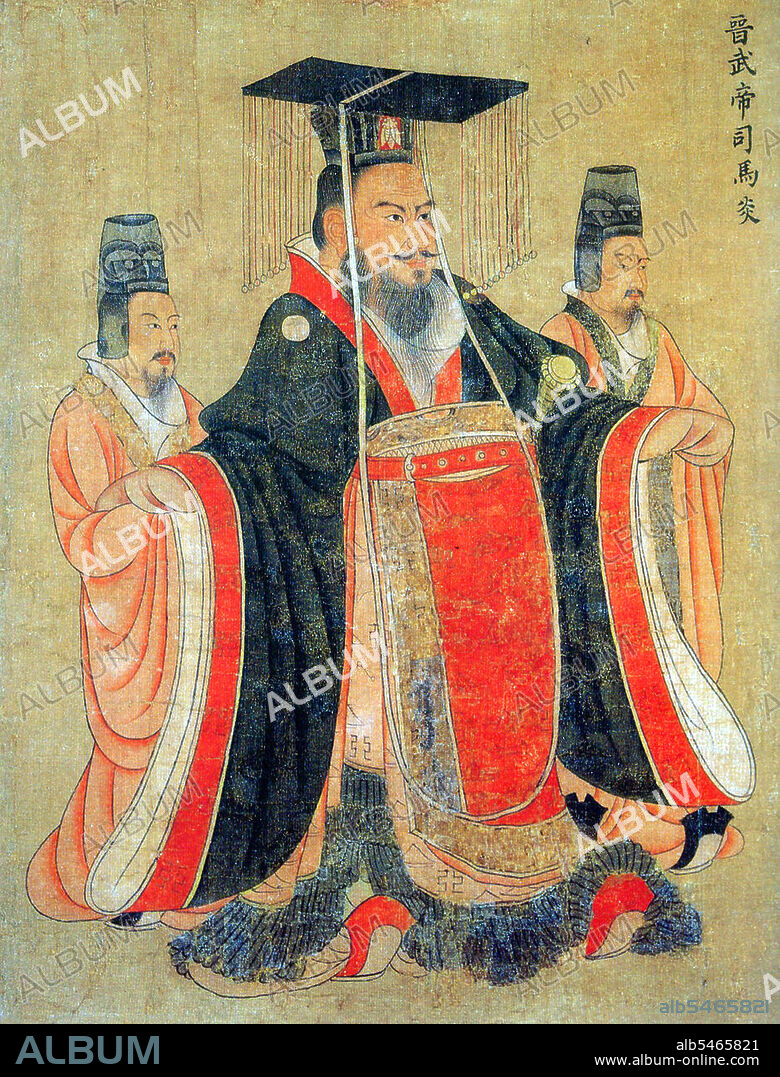alb5465821
China: Emperor Wu of Jin (236–290) from the 'Thirteen Emperors Scroll' painted by Tang Dynasty court painter Yan Liben (600-673).

|
Add to another lightbox |
|
Add to another lightbox |



Buy this image.
Select the use:

Title:
China: Emperor Wu of Jin (236–290) from the 'Thirteen Emperors Scroll' painted by Tang Dynasty court painter Yan Liben (600-673).
Caption:
Emperor Wu of Jin (Chin Wu-ti), personal name Sima Yan (236 – May 17, 290) was a grandson of Sima Yi, a son of Sima Zhao, and the first emperor of the Jin Dynasty (265-420) after forcing the Cao Wei emperor Cao Huan to abdicate to him. He reigned from 265 to 290, and after destroying Eastern Wu in 280 was the emperor of the unified Chinese empire. Emperor Wu was known for his extravagance and sensuality, especially after the unification of China; legends boasted of his incredible potency among ten thousand concubines. Yan Liben (Wade–Giles: Yen Li-pen, c. 600-673), formally Baron Wenzhen of Boling, was a Chinese painter and government official of the early Tang Dynasty. His notable works include the Thirteen Emperors Scroll and Northern Qi Scholars Collating Classic Texts. He also painted the Portraits at Lingyan Pavilion, under Emperor Taizong of Tang, commissioned in 643 to commemorate 24 of the greatest contributors to Emperor Taizong's reign, as well as 18 portraits commemorating the 18 great scholars who served Emperor Taizong when he was the Prince of Qin. Yan's paintings included painted portraits of various Chinese emperors from the Han Dynasty (202 BC-220 AD) up until the Sui Dynasty (581-618) period.
Credit:
Album / Pictures From History/Universal Images Group
Releases:
Model: No - Property: No
Rights questions?
Rights questions?
Image size:
3800 x 4990 px | 54.3 MB
Print size:
32.2 x 42.2 cm | 12.7 x 16.6 in (300 dpi)
Keywords:
ART • ARTS • ASIA PICTURES • ASIA • ASIAN IMAGE • ASIAN IMAGES • ASIAN PICTURES • ASIAN • CHINA • CHINE • CHINESE • EMPEROR • HISTORIA UNIVERSAL • HISTORIA • HISTORICAL IMAGES • HISTORICAL PICTURES • HISTORY IMAGES • HISTORY PICTURES • HISTORY • IMPERIAL CHINA • KAISER • KING • LEGEND • MANDATE OF HEAVEN • MONARCH • MONARCHY • PAINT • PAINTING • PAINTINGS • PORCELAIN • ROYALTY
 Pinterest
Pinterest Twitter
Twitter Facebook
Facebook Copy link
Copy link Email
Email
